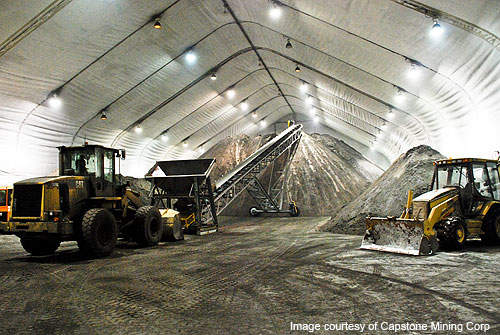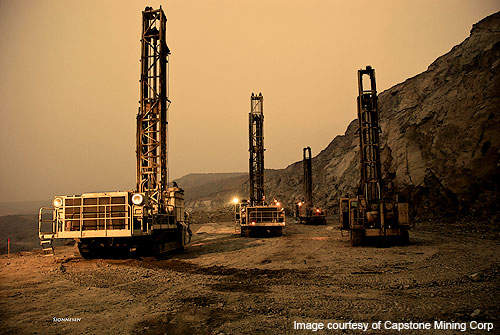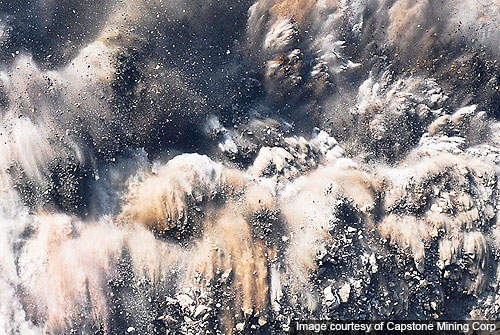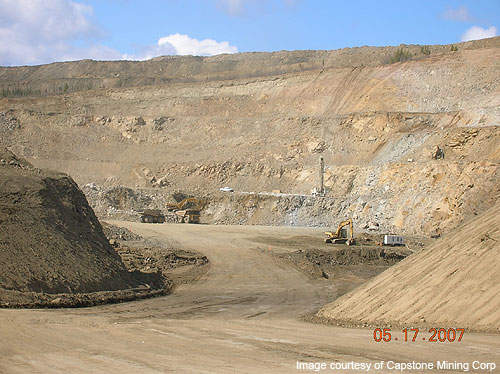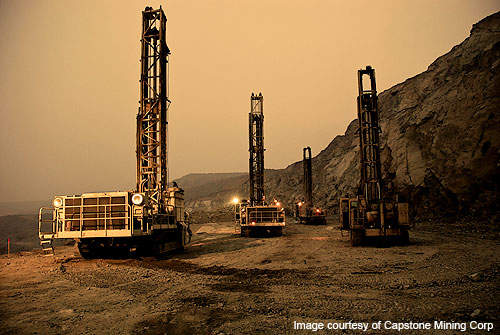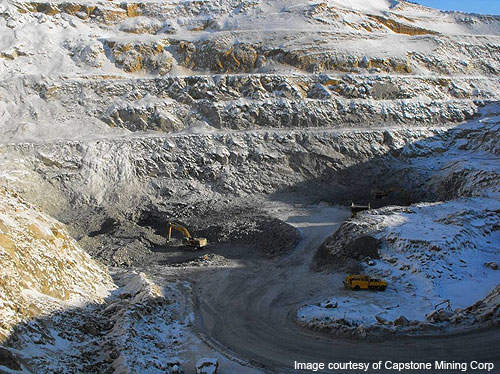The Minto copper-gold mine is located in the Whitehorse Mining division in the Yukon Territory, about 240km north-west of Whitehorse in Canada. It began production in October 2007 and is currently operated as an open-pit mine. It is owned by Minto Explorations Ltd, a 100% subsidiary of Capstone Mining Corp, which acquired the operation in June 2005. The company discovered eight new resources near the primary resource b y 2010. These include Area 2, Area 118, Ridgetop, Copper Keel, Minto North, Minto East, Wildfire and Inferno.
Mining operations were suspended temporarily between 8 June and 14 June 2010 when a wildfire spread too close to the mine site. The fire was completely extinguished by 14 June, when operations resumed.
Minto has been undergoing continuous explorations and a series of feasibility studies since 2006, resulting in the increase of reserves and extension of mine life. It has undergone five pre-feasibility studies (PFS) and is expected to complete the Phase VI PFS in 2012. As per the latest Phase V PFS completed in March 2011, Minto will have an average production of 43 million pounds of copper concentrates over the mine life, which is now extended to 2020.
Minto reserves
The resource has been significantly expanded over the years. The principal resource is Minto main deposit. It lies immediately north of two deposits, Area 2 and Area 118, which are continuous and often considered as one deposit. The Minto north deposit lies about 700m north of the Minto main deposit. In 2009 the most recent resource, Minto east was discovered.
The Phase V PFS estimated the proven and probable reserves to be 12.9Mt graded at 1.53% Cu, 0.60g/t Au and 5.2g/t of Ag.
According to the August 2010 reserves estimates, the mine hosts measured and indicated reserves of 34.3Mt graded at 1.09% Cu, 0.39g/t of Au and 3.8g/t Ag. The inferred reserves are estimated at 6.5Mt graded at 0.9% Cu, 0.3g/t of Au and 3.1g/t Ag.
Geology
The Minto deposit lies within the Carmacks copper belt, a north-north-west trending belt marked by metamorphic assemblages and batholiths. The belt hosts intrusion-related copper and gold mineralisation. The property area and its surrounding zones are overlain entirely by early Mesozoic plutonic rocks of the Minto pluton of the intrusive Granite Mountain batholith. Compositionally, the plutonic rocks are different from the quartz diorite and granodiorite to quartz monzonite. Late Cretaceous clastic sedimentary rocks and andesitic to basaltic volcanic rocks lie unconformably over the batholith.
The Minto pluton that hosts the hypogene copper sulphide mineralisation is composed predominantly of granodiorite. Three varieties of intrusive rocks are found, including megacrystic K-feldspar granodiorite, quartzofeldspathic gneiss and biotite-rich gneiss. Directly towards its east, the Minto pluton is flanked by a complex of undated mafic volcanic rocks that outcrop on the Yukon River shores. The contact zone between the mafic volcanic rocks and the batholith remains unexposed.
Copper mineralisation primarily occurs within rocks that have a structurally imposed texture. The textures vary from weak foliation to strongly established gneissic banding.
There is a sharp contact between the foliated deformation zones and the large phases of granodiorite. Supergene mineralisation is found close to the main mineralisation’s near-surface extensions beneath a conglomerate-defined unconformity. The conglomerate is composed of weathered and decomposed granodiorite.
Across the Minto deposits, evidence of ductile and brittle phases of deformation is found. The ore-bearing areas are, at a few places, openly and gently folded to a length of several hundred metres. Late brittle fracturing and faulting have been observed throughout the deposit. The two main faults include the Minto Creek fault (MC fault) and the DEF fault. The MC fault is a steeply north-north-east plunging fault that divides the Minto main deposit into two, while the DEF fault defines the northern section of the Minto main deposit. It is characterised by an east-west strike and north-north-west dip.
Production
The mine produced 40.5Mlb of copper in 2010. The current capacity of the mine is 3,000-3,500t a day.
The mine is expected to produce 39 to 41Mlb of copper in 2011. The 2011 projections are based on mining of the remaining part of the main pit and from the low grade stockpiles of Area 2/118 pit.
As of May 2011, the Wildfire and Copper Keel deposits are being stripped. They are recognised as the south-east extension of Area 2/118 deposit. The Area2/118/Wildfire and Copper Keel together will be known as Minto South Deposit.
Mining and processing
The deposit is mined with open pit methods. Higher-grade ore is extracted and milled first, while lower-grade ore is sent to the stockpiles to be processed at a later stage of the mine’s life.
Copper concentrates are produced following the conventional crushing, grinding and floatation method. An on-site processing facility is equipped with a conventional circuit including a crusher, semi-autogenous grinding and ball mills to conduct grinding and flotation. The concentrates are filtered before it is stockpiled in a storage facility, and later transported to the port of Skagway, Alaska, for export. To dry-stack the tailings, a filtered tailings system is used.
The processing plant was opened in May 2007 with initial design production rate of 1,563t a day. The facility operated at a capacity of 3,200t a day after three phases of expansion were completed in 2009. A fourth phase expansion has increased the facility’s throughput capacity to 4,100t a day. It is expected to commence production in 2012. Phase IV, encompassing Area 2/118, will be mined using open-pit and underground methods.
Phase V PFS study recommends ramp-up of mills capacity to an average of 3,750t a day.
Capstone is expected to start Phase VI PFS in 2011 and is anticipated to be completed in the first quarter of 2012. Phase VI will include Copper Keel and Wildfire resources to the reserve base.
Contracts
YEC signed a power purchase agreement with Minto in February 2007 to supply grid power to the mine site. The agreement was approved by the Yukon Utilities Board in May 2007. Power will be supplied by building the Carmacks main line and spur line at the mine site at a cost of C$18m (US$15.2m).

